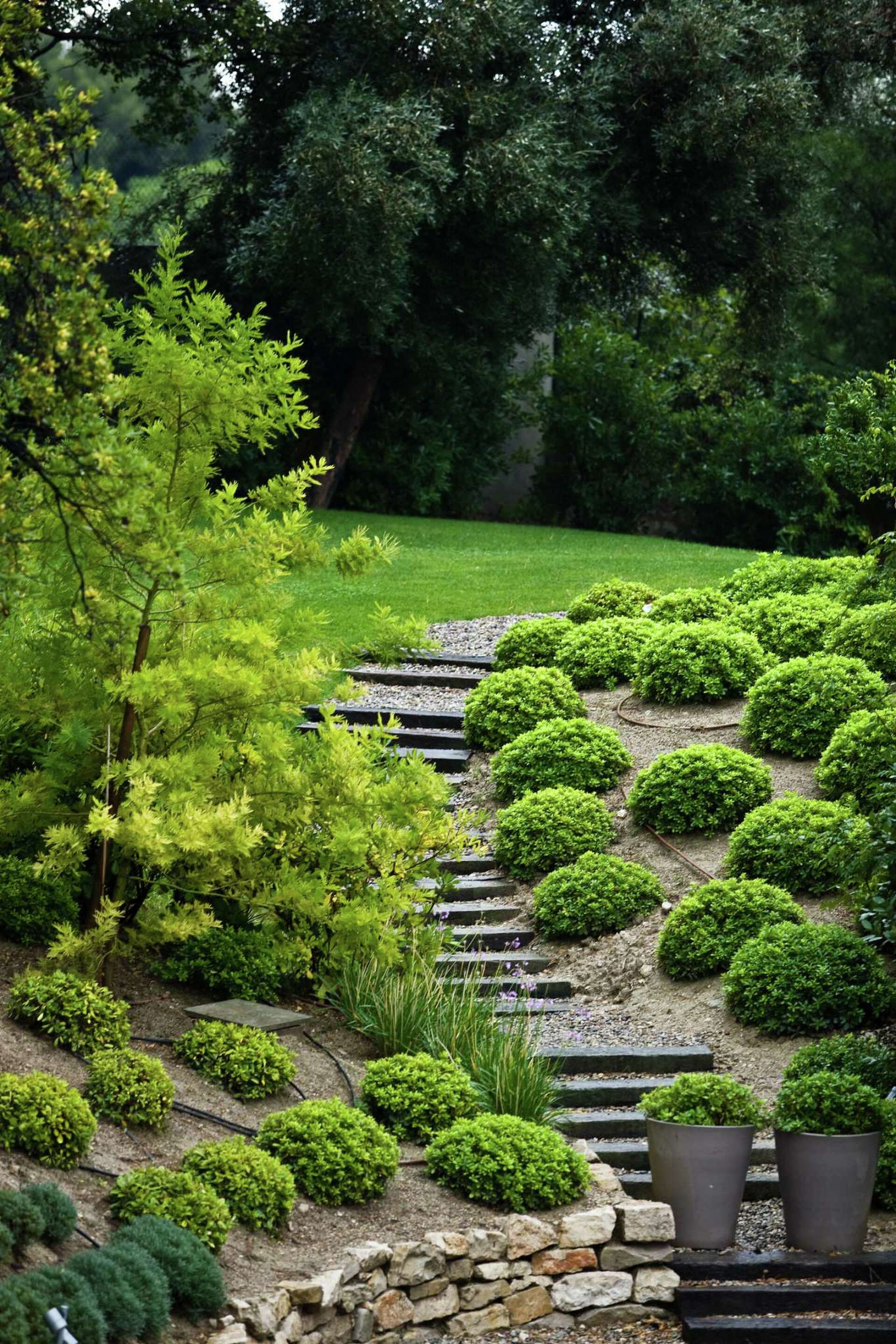Natural design approaches for Steep hill landscaping without constant maintenance.
Natural design approaches for Steep hill landscaping without constant maintenance.
Blog Article
Achieve a Beautiful Outdoor Oasis With Thoughtful Steep Hill Landscape Design Solutions
Changing a high hill into a captivating exterior oasis presents special difficulties that call for cutting-edge landscaping services. Methods such as terracing, the installation of retaining wall surfaces, and the choice of indigenous plants play essential roles in this process. Additionally, including water functions can even more enhance the landscape's appeal.
Understanding Steep Hillside Challenges
Landscaping on steep hills offers one-of-a-kind obstacles that call for cautious factor to consider and calculated preparation. The inclination of the terrain can cause problems such as soil disintegration, water overflow, and limited access, every one of which need to be dealt with to develop a practical and cosmetically pleasing outside space.
Among the primary issues with steep hillside landscaping is erosion, which can arise from hefty rains or incorrect drain. This not just influences plant health yet can additionally jeopardize the security of the incline. Applying reliable disintegration control actions, such as growing deep-rooted plant life or utilizing compost, is important in maintaining the integrity of the landscape.

Designing With Terracing Methods
To reduce the challenges presented by high hillsides, including terracing strategies can be a reliable remedy. This layout method transforms a sloped landscape into a series of level, level locations, producing an aesthetically striking and functional outside area. Terracing not just assists to stop dirt erosion but likewise helps with far better water drain, which is vital in maintaining the health of plants and the security of the hill.
When making balconies, mindful factor to consider of the slope's angle and the dirt kind is essential. Each balcony should be tactically placed to make best use of sunshine exposure while minimizing the risk of drainage. Using indigenous plants on each level can improve biodiversity, promote sustainability, and lower maintenance needs. Additionally, integrating pathways between balconies can enhance accessibility and motivate exploration of the landscape.
Terraced gardens can serve numerous purposes, including vegetable production, decorative screens, or outdoor seating locations. By using products that mix harmoniously with the surrounding environment, the terracing can boost the general aesthetic charm of the home. Ultimately, thoughtful terracing transforms steep hills right into functional, gorgeous spaces that invite interaction and enjoyment.
Applying Retaining Wall Surfaces
When encountered with the obstacles of high terrain, applying maintaining wall surfaces can give both structural support and aesthetic improvement to a landscape. These wall surfaces serve to stop dirt disintegration, support slopes, and develop level locations for horticulture or entertainment use. Steep hill landscaping. By effectively handling water drainage and reducing soil activity, preserving walls safeguard your landscape financial investment while boosting safety

Expert setup is critical to guarantee the durability and efficiency of retaining wall surfaces. Appropriate drainage systems must be integrated to alleviate hydrostatic pressure, avoiding structural failure. Consulting with landscape professionals will certainly click reference make certain that the design straightens with your overall vision while adhering to local laws.
Choosing Native Plants
Choosing indigenous plants for your landscape layout uses various ecological and aesthetic advantages. Steep hill landscaping. Indigenous plants are adapted to the neighborhood climate and soil problems, requiring less water and upkeep contrasted to non-native types. This adaptability not only conserves resources however also advertises a much healthier ecological community, as native plants support neighborhood wildlife, including pollinators such as bees and butterflies
Incorporating indigenous flora into your high hill landscape design can boost soil stability, lowering erosion and advertising a well balanced ecosystem. Deep-rooted indigenous plants aid secure the soil, making them excellent for sloped locations. These plants commonly display vibrant colors and diverse structures, producing an aesthetically enticing landscape that harmonizes with the surrounding atmosphere.
When choosing native plants, consider their growth routines, seasonal interest, and compatibility with various other species. Organizing plants with comparable water and sunlight needs can lead to a much more cohesive design, while also simplifying maintenance. By picking native plants, you not just cultivate a sustainable outdoor oasis yet also add favorably to the regional biodiversity, making sure that your landscape grows for many years to find.
Incorporating Water Functions
Incorporating water features into your high hill landscaping can significantly enhance both the aesthetic allure and ecological performance of the space. The sound of flowing water creates a peaceful environment, while aesthetically, it can act as a prime focus that draws the eye and includes deepness to the landscape.
When selecting water attributes, take into consideration choices that complement the all-natural shapes of your hill. Waterfalls, as an example, can cascade the incline, developing visual interest and advertising healthy and balanced water drainage. Ponds can additionally be integrated right into the layout, urging local wild animals and offering habitats for different varieties.
Additionally, the placement of plants around these features is essential. Native water plants not only boost the beauty of the water attribute yet additionally add to its eco-friendly equilibrium by filtering contaminants and offering food for neighborhood animals.
Maintenance is one more essential element; make sure that your water feature is designed for simple maintenance. A correctly created feature will require minimal treatment, allowing you to appreciate the charm and peace it uses without extreme labor. Ultimately, thoughtfully bundled water attributes can transform your high hillside landscape right into a captivating outdoor sanctuary.
Verdict
To conclude, changing a high hillside into a lovely outside sanctuary demands find out here thoughtful landscape design strategies that deal with erosion control and ease of access. The assimilation of terracing methods, the application of maintaining walls, and the option of indigenous plants are vital parts of effective design. In addition, incorporating water attributes enhances both aesthetic charm and water drainage effectiveness. With cautious planning and implementation, high hillsides can become serene hideaways that offer both capability and aesthetic delight.
Report this page